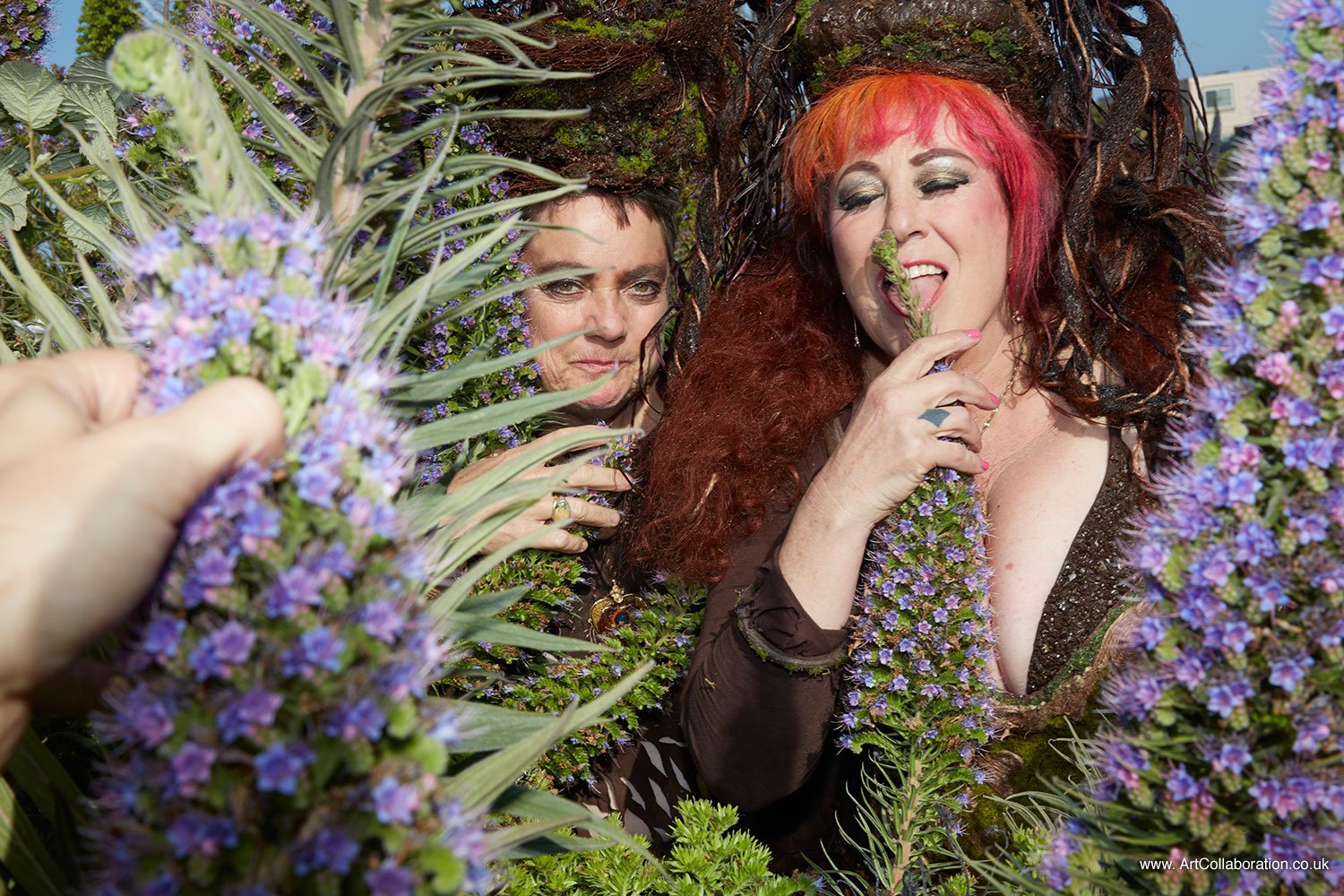Society is no stranger to environmental activism. With increased education on climate change (despite our new president-elect believing it was invented by the Chinese), more people are becoming concerned about lowering their carbon footprint and lead more eco-friendly, sustainable lives. A new movement, however, is taking the desire to be conservational and making it a little more R-rated.
Ecosexuality has been around since the early 2000s, but has increased in popularity over the course of 2016. Google Search Data shows a dramatic spike in interest over the last year, and more than 100,000 people are believed to openly identify as an ecosexual.
What the Hell Is Ecosexuality?
Well, there is no short answer to this question. Somewhere between a sexual orientation and an activism platform, ecosexuality means different things to different people.
Wikipedia defines it as “a growing movement of art, activism, theory and social practice exploring the intersections of sexuality and ecological relations in a number of different forms and contexts.” This definition is broad because it attempts to cover the varying viewpoints within the community. According to Amanda Morgan, a faculty member at UNLV School of Community Health Sciences, ecosexuality occurs on a spectrum, similar to the Kinsey Scale for hetero- and homosexuality.
At one end of the spectrum, is “a person that finds nature romantic, sensual and sexy.” They identify it as their orientation and engage in sexual activities with the Earth, gaining pleasure from waterfalls or talking erotically to plants.
On the other end of the spectrum are those looking at the movement as a way to preserve the Earth. Sex products such as condoms and lubes have a negative impact on the planet, and many followers of ecosexuality have looked for ways to make sex more environmentally conscious.
Somewhere in the middle are people who look at the environment as a platform for experiencing their own sexuality, those who like hiking naked and getting busy in the trees.
Where Did It Even Come From?
In 2011, after spending several years officiating wedding ceremonies where people took vows to love and care for the planet, Annie Sprinkle and Elizabeth Stephens published the “Ecosex Manifesto,” a document that outlined their pledge to be ecosex activists. In six clauses, the couple described their relationship with nature, saying “We make love to the Earth through our senses. We celebrate our E-spots. We are very dirty.” They establish ecosexuality as an identity. “We are polyamorous, and pollen-amorous,” the couple said. Inspired by their involvement in the fight for marriage equality, they extended the idea to include this new identity, even calling for an “E” to officially be added to the LGBTQ initialism just last year.
In 2013, they released a film called “Goodbye Gauley Mountain: An Ecosexual Love Story,” which detailed their relationship with the Appalachian Mountains.
At the same time as the “Ecosex Manifesto” was being published, Stefanie Iris Weiss wrote a different book researching the harmful effects of sex products on the environment called “Eco-sex: Go Green Between the Sheets and Make Your Love Life Sustainable.”
These two seemingly separate ideas have since converged into a full-fledged social movement.
Why So Popular Now?
As part of the Liveworks Festival of Experimental Art at Performance Space in Sydney, Australia, an interactive art exhibit called “Ecosexual Bathhouse” just ended its run last week. This performance art piece was created by Pony Express, a duo made up of artists Loren Kronemyer and Ian Sinclair.
Ecosexual Bathhouse presented people with six different rooms they could explore, promising a variety of eco-erotic experiences. You could pollinate flowers with finger condoms or stick your arm elbow-deep in the “composting glory hole,” a bathtub filled with dirt and worms. After entering the exhibition, participants were asked if they would like any morphs, pseudo-sex to be used in conjunction with the natural elements. Among the options was the Squirter, a strap-on spray bottle used to shower the plants and people with water, and the Paw, a glove prohibiting the use of the thumb—an animalistic bondage device.

This exhibit brought people together to celebrate the intimate relationship between humans and the Earth and to raise awareness of the way the relationship has become an abusive one.
What’s the Point?
The underlying message of the ecosexuality movement is not one of lust, but of love and awareness. Sprinkle and Stephens wrote in their manifesto that they wanted to “stop the rape, abuse and poisoning of the Earth.” The emphasis on the connection between ecology and sexuality is an attempt at making the fight for conservation more personal.
The “Ecosexual Bathhouse” project was created with a dark humor, but Kronemyer and Sinclair deeply sympathize with the movement. In an interview with Vice, they said, “Sex sells, and if humans can learn to love the environment, maybe they can learn to preserve it.” They used the metaphor of making love with the Earth for, if you can believe it, actually giving the Earth the love that it deserves.
Before entering the exhibit, people were asked to seek consent from the different species. Pony Express wanted to reverse the role of human dominance over the Earth to one of submission and emphasize the need for consent in our relationship with the environment. Humans have a tendency to look at the world as theirs for the taking, not as an entity needing respect. By placing the importance on sex, an immediate need for action is put into people’s minds. As Stefanie Iris Weiss said, “If you’re running from floods, you won’t have any time for sex.”
The Earth is often personified as a mother figure, but the ecosexuality movement is shifting that view from mother to lover. Because, as Amanda Morgan points out, “If you treat your mother badly, she’s probably going to forgive you. If you treat your lover badly, she’s going to break up with you.” Ultimately, the members of the ecosexuality movement saw a need to reinvest society in the idea of protecting the Earth. What better way to excite people than sex?

















